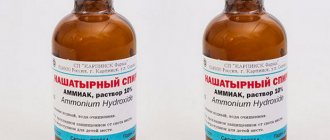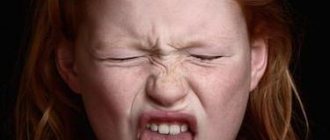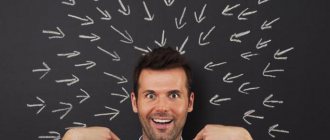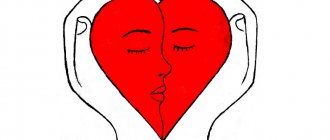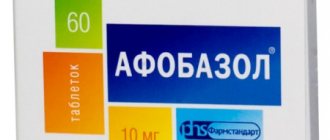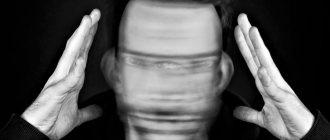What is a placebo?
Placebo drugs do not contain active ingredients, but if participants think they are taking medication, the placebo may improve their physical condition. The placebo effect describes any psychological or physical effect that placebo therapy has on a person.
Placebos have become an integral part of all serious clinical trials.
In early clinical trials, the performance of a new drug was measured against a group of people who were not taking any medications. However, since it was discovered that taking an empty pill can cause a placebo effect, it is recommended to have a third group of participants.
This additional group takes a pill that does not contain the active ingredient to study the reaction to it. Members of this group take, for example, a sugar pill.
A drug can be approved if it produces a greater effect than a placebo.
Placebos have been observed to cause measurable physiological changes, such as an increase in heart rate or blood pressure.
The placebo effect is even greater for diseases diagnosed by self-reported symptoms: depression, anxiety, irritable bowel syndrome (IBS) and chronic pain.
Placebo interventions have variable effects and depend on many factors. For example, an injection produces a stronger placebo effect than a pill. Two tablets work better than one, capsules are stronger than tablets, and larger tablets produce larger reactions.
Numerous studies have shown that even the color of the pills made a difference in placebo results: red, yellow and orange are associated with stimulant effects, while blue and green are associated with tranquilizing effects.
Researchers have repeatedly shown that interventions such as “sham” acupuncture are as effective as acupuncture. Sham acupuncture uses retractable needles that do not pierce the skin.
Placebos can reduce symptoms of many diseases, including Parkinson's disease, depression, anxiety and fatigue.
The strength of the effect also varies between cultures. In the treatment of stomach ulcers, the placebo effect is low in Brazil, higher in Northern Europe and particularly high in Germany. However, the placebo effect on hypertension is lower in Germany than in other countries.
Placebo in medicine
What is a placebo in medicine? This is treatment with pacifiers with the obligatory suggestion of the positive effects of therapy. Therapy with “false” medicines is rarely used in modern medicine, and this method of healing is considered unethical in many countries. According to leading doctors in the world, the patient should know what medications he is taking and what their effect is. But white lies are allowed when other types of treatment are dangerous or inappropriate in a given case.
For example, a patient has phobias that cannot be relieved with antidepressants, and long-term use of medications causes addiction and side effects. The use of pacifiers with suggestions for recovery brings quick results and allows the patient to return to a full life. And there are many such examples in medicine, especially in the case of psychosomatic pathology.
Placebo principles are also used in the pharmaceutical industry at the stage of testing the effectiveness of drugs before release into the public market. To do this, create 2 experimental groups, one of which takes the study drug, and the other takes pacifiers. If the effectiveness of the drug is approximately the same in the two groups, then the pharmaceutical is considered ineffective. Serial production of a medicinal product begins if the effectiveness of the drug is significantly higher than that of an empty tablet.
Interesting facts about placebos
- The placebo effect has been measured in thousands of medical experiments, and many doctors admit to regularly prescribing placebos.
- Pharmaceutical companies must show that their new drugs work better than placebos before the drugs are approved.
- Placebos have been shown to affect a range of health conditions.
- The color of the pill can change the strength of the placebo effect, with larger pills producing a stronger effect than smaller ones.
- Some believe that the healing properties of the placebo effect can be explained by evolutionary biology.
Types of placebo
A placebo can be any form of medication - tablets, powders, solutions, and so on. Usually, under the guise of a medicinal drug, the patient receives sugar or starch, and distilled water takes on the function of the solution. Any drug can be imitated using a placebo.
In addition, the placebo effect can be achieved even with the help of verbal suggestion. Whatever type of placebo is presented, the patient must fully believe that it has healing powers, which is why the doctor prefers to reinforce the verbal exhortations with some kind of pill.
Suggestion can also be negative. Through suggestion, the patient may develop a negative reaction to a harmless drug. This phenomenon is called "nocebo", and it has the opposite effect. It can be useful in drug treatment: the patient is given the drug, warning that if he starts drinking alcohol after taking it, this can result in horrific consequences.
How it works?
The placebo effect is not the same for different people and for different diseases. The reasons for the placebo effect are not fully understood. Given the variability in outcome, it is likely that multiple mechanisms are involved.
Below are four factors that are said to be involved in the placebo effect.
1. Expectation and conditioning
Part of the power of a placebo lies in the expectations of the person taking it. These expectations may relate to the treatment, the substance, or the prescriber.
This anticipation can lead to a decrease in stress hormones or cause them to change their symptoms. For example, “sharp pain” may be perceived as “unpleasant tingling.”
Watch a real video about the placebo effect in action:
On the other hand, if a person does not expect the drug to work or expects there to be side effects, a placebo may lead to negative results. In these cases, the placebo is called a nocebo.
One study gave placebo opioids to participants who had recently taken real opioids. A well-documented side effect of opioids is respiratory depression.
The researchers found that the placebo drug caused respiratory depression despite the lack of active ingredients.
Some believe that classical conditioning may play a role in the placebo effect. People are used to taking medications and feeling better. The very act of taking a drug causes a positive reaction.
Conditioning and expectation are separate mechanisms, but they are likely interrelated.
2. The placebo effect and the brain
Brain studies have shown measurable changes in the neural activity of people experiencing placebo analgesia. Areas that were involved included parts of the brainstem, spinal cord, nucleus accumbens, and amygdala.
Strong placebo responses have also been associated with increased dopamine and opioid receptor activity. Both of these chemicals are involved in reward and motivation in the brain. It was also found that nocebo, on the contrary, reduces the activity of dopamine and opioid receptors.
Some of these neurological changes occur in areas of the brain that are often targeted by antidepressants. This may account for the 50-75 percent placebo response rate in antidepressant trials.
3. Psychoneuroimmunology
Psychoneuroimmunology is a relatively new field of scientific research. He studies the direct influence of brain activity on the immune system. Just as a dog can be trained to salivate at the sound of a bell, mice can be trained to curb their immune systems when they receive a certain stimulus.
It has long been known that a positive prognosis can help prevent disease. In recent years, this pseudoscientific phenomenon has become scientific fact. Expectations of improved health can affect the effectiveness of a person's immune system.
The ways in which the brain influences the immune system are complex. Their explanation has only recently begun to take shape. There is a possibility that this type of interaction plays a role in the placebo effect.
4. Evolution of self-preservation regulation
One explanation for the placebo effect is the evolution of the human brain's capacity for moderate healing. The mammalian body has developed useful physiological responses to pathogenic organisms.
For example, a fever helps remove bacteria and viruses by raising core temperature. However, since these reactions come at a cost, the brain decides when it will perform them.
Thus, at the end of pregnancy or during a state of malnutrition, the body does not show a feverish response to infection. A fever can harm the baby or use up more energy than a fasting person can save.
Evolved health regulation theory suggests that a strong belief in a cure or intervention can improve symptoms. The brain “decides” that it does not need to trigger an appropriate response such as fever or pain.
How placebos work
Let's study in more detail how placebos work. Many neurophysiological mechanisms are involved in the implementation of this effect. Activation of certain areas of the brain occurs: the anterior cingulate cortex, prefrontal cortex, nucleus presenta. Neurological and mental mechanisms work in parallel. As mentioned, a large role is also assigned to suggestion.
It turned out that when administered parenterally (via droppers), placebo is more effective. If the patient is sensitive to the administration of the drug, then most likely he will feel the placebo effect. It has been noted that for migraines, the effect of the “pacifier” is much higher if the doctor does not give out tablets, but gives an injection.
The price of the drug also matters. If the patient learns that the drug, which is actually a placebo, is not cheap, then its effect will be more noticeable.
Examples of manifestations of the placebo effect
At one time, placebo was used only in experiments as a control. However, given their ability to effect changes in the body, it is widely studied as a treatment in its own right.
The following situations have demonstrated positive reactions to the placebo effect:
Pain
The ability of a placebo to reduce pain is called placebo analgesia. This is thought to work in one of two ways: either the placebo triggers the release of natural pain-killing substances called endorphins, or they change the person's perception of pain.
Additionally, genuine analgesics have been found to be more effective if the person knows they are being given a drug than a drug that is given without the person's knowledge. In this case, the placebo effect can be seen as facilitating the genuine intervention.
Depression
It is believed that the effect of antidepressants is largely dependent on the placebo effect. Eight different studies have shown that over a 12-week period, placebo antidepressants can be effective and can produce a long-lasting placebo effect.
Anxiety disorder
The placebo effect is especially common in anti-anxiety drug trials. It significantly slows down the discovery and introduction of new forms of drugs.
Cough
Experience from cough medicine trials has shown that 85 percent of the cough reduction is due to the placebo effect, and only 15 percent is due to the active ingredient.
erectile disfunction
People with erectile dysfunction responded well to placebo treatment.
In one study, participants were divided into three groups. The first group was told they would receive treatment for erectile dysfunction, the second group was told they would receive either a placebo or the actual treatment, and the third group was told they would receive a placebo.
All three groups were actually given placebo starch tablets, but erectile dysfunction in all three groups improved significantly without any difference between the groups.
IBS
A meta-analysis found that placebo response rates in people with IBS ranged from 16.0% to 71.4%. It has also been noted that the placebo effect is greater in trials where participants are required to take medications less frequently, and people with lower anxiety levels are more susceptible to the placebo effect.
A more caring approach by physicians was found to enhance the placebo effect.
Another study found that even when participants knew they were taking a placebo, their IBS symptoms improved.
Parkinson's disease
An analysis of 11 clinical trials found that 16 percent of participants with Parkinson's disease in the placebo groups showed significant improvements, sometimes lasting for 6 months.
This effect appears to be due in part to the release of dopamine in the striatum.
Epilepsy
Participants in antiepileptic drug trials have placebo response rates ranging from 0 to 19 percent. The “placebo effect” for this study was defined as a 50 percent reduction in their normal seizure frequency.
Practical use
- These days, placebos are quite often prescribed to patients who are prone to seeking out manifestations of various diseases. Since in such cases the disease exists only in the patient’s head, it is more advisable to treat it with methods based on suggestion in order to avoid unnecessary drug effects on the body.
- Placebo drugs are also widely used to monitor the effects of new medications.
- Treatment of alcohol and drug addiction is also not complete without placebo drugs. During the treatment process, patients are instilled with the desire to get rid of the disease.
- Placebos are also used effectively in psychiatry. Treatment based on suggestion can easily correct various mental abnormalities, be it depression, sleep disorders or deviations from the norm in the sexual sphere.
- Placebo drugs are also used in sports. The athlete's conviction that the mixture he is taking is doping helps improve performance.
- Dummy drugs help get rid of illnesses of a psychosomatic nature, since the influence of the psyche on the human body is easier to remove with the help of suggestion.
Practice using placebos
Doctors around the world use placebos for clinical purposes because of their effects on a range of diseases. A 2008 Danish study found that 48 percent of doctors had prescribed placebos at least 10 times in the past year. Most often these were antibiotics for viral diseases and vitamins for fatigue.
A similar survey of doctors in Israel found that 60% of them prescribed placebos to discourage patients who wanted unnecessary drugs or if the patient “needed reassurance.”
Harnessing the Power of Placebo
Doctors around the world use the placebo effect for clinical purposes. A Danish study conducted in 2008 showed that 48% of doctors prescribed placebos at least 10 times per year . Most often it was a replacement for antibiotics for viral diseases and vitamins for fatigue.
A similar study in Israel found that 60% of doctors prescribe placebos for patients who want non-prescribed medications.
Is this ethical?
This use of placebos raises ethical questions. After all, the doctor misleads the patient. On the other hand, if a placebo works, then why not use it?
However, there is a possibility that by prescribing a placebo simply to reassure the patient, the doctor may not diagnose a serious illness in time.
But there are cases when a placebo is the only option. For example, for some severe burns, opioid pain relief cannot always be used due to respiratory depression. And an injection of saline solution under the guise of a powerful painkiller can reduce the patient's suffering.
However, rather than ignoring the placebo effect, today's scientists are exploring ways to harness its power.
If this effect can be used in conjunction with pharmaceutical interventions, it could take medicine to the next level.
Placebo and ethics
The use of placebos raises ethical questions because the doctor is misleading the patient. On the other hand, if the placebo has the desired effect, the treatment should still be considered effective.
Another opinion is that by prescribing a placebo to reassure a patient, proper treatment of a serious illness may be complicated. Doctors and pharmacists be accused of fraud.
There are many ethically sound ways to use placebos in medical practice, although like any other ethical debate, the debate over and against the use of placebos is likely to continue for a long time.
For example, a placebo may be useful in treating some burn victims. Opioid pain relief cannot always be used due to concomitant respiratory depression. In this case, a physiological injection, given under the guise of a powerful painkiller, can reduce the patient's suffering.
Ethical side of the issue and withdrawal syndrome
How does the placebo effect work if the ethical side of the issue is resolved? Scientists have proven that patient awareness of taking pacifiers does not reduce the effectiveness of therapy. At the same time, the suggestion about the effectiveness of treatment comes to the fore. Doctors warn patients about taking pacifiers, but note that such therapy has helped many patients and is considered promising. In this case, faith in recovery triggers psychological and physiological mechanisms to combat the disease without “deceiving” the patient.
In addition, it was found that pacifiers can cause withdrawal symptoms, just like medications. This indicates the enormous influence of suggestion and autosuggestion on the functioning of the brain. Negative consequences on the part of organs and systems after drug withdrawal are caused not by chemicals, but by psychological attitudes. For example, the doctor informs the patient that the medicinal products taken can cause headaches and bowel disorders. As a result, the patient receives the listed side effects without an objective reason.
What happens in the brain and how to use placebos in life
What is the actual internal process of placebo action? Systems, reactions and receptors such as endocannabinoids, dopamines and endorphins are activated. That is, all possible natural bases begin to interact with each other, creating a state of happiness and euphoria for a person. They say that sport relieves stress. In general, yes, because during exercise, happiness hormones are produced.
When absorbing (literally or figuratively) a placebo, the pleasure center in the brain, the reward system, and the prefrontal cortex (responsible for planning actions) are activated. At the same time, immunity increases, the body becomes “open” to positive changes. The exact mechanism of “thought power” has not yet been established. Research into the placebo phenomenon continues regularly.
How can you use your body's ability to deceive you?
- Are you in a bad mood? Smile! Seriously! Go to the mirror and smile. Within a few minutes you will feel a real lift in mood. Here's one psychological placebo effect in real life.
- You quarreled with someone - hug. Whether you want it or not. A very useful “deception” for relationships. Make it a rule to always hug and go to bed together. Before you know it, chemical reactions will do their job and the grievances will go away. The playful “I’ll kiss you and everything will go away” is also a placebo. But, you must agree, it does pass, right?
- Are you taking an exam but are afraid even though you have studied the material? Take a cheat sheet. You probably won’t get it, but this awareness (there is a safety net) will help you.
- Are you stressed and feel like you need to drink/smoke? No need! All you need is a surge of endorphins (they are produced under the influence of nicotine or alcohol). Offer yourself an alternative (walk, sports, reading, attractions). As a last resort, for example, instead of alcoholic beer, take non-alcoholic beer. By the way! Electronic cigarettes are also a placebo.
- Have you had a fight with someone, but want to make peace? Or do you see someone sad? Bake cookies, bring them to the person, and say something like, “I put a spell on them. You need to take a bite and all your sorrows will immediately go away.” Believe me, no matter how old a person is, this will have its effect. Endorphins will go through the roof.
Tell me, have you ever said the phrase “now I’ll rest for 10 minutes and get everything done”? And they really rested, and then calmly did it. Was? Here's a placebo for you. You have instructed the brain that the body will recover in 10 minutes, and then whether it wants it or not, you need to do the task.
Practical use
The effect of self-hypnosis can be accompanied by the use of medications, as well as other types of therapy and even surgery. Therapy can only come down to suggestion. This form of medical influence on the body is called the placebo method.
The decisive factor is the preparation of the soil for treatment. The patient must believe in the effectiveness of the manipulations performed. Only in this case will his body give an appropriate response to treatment.
History of placebo
The placebo effect has been discovered since ancient times. It was believed to be based on conviction, a faith that could be surprisingly strong. This effect is directed in both directions: a person can either recover or, conversely, suffer. A similar case was described in the 8th century AD. e. a doctor from Vienna named Erich Menninger von Lerchenthal. Several students disliked their friend and decided to play a cruel joke on him. Having caught the unfortunate man, the guys announced that they were going to behead him, showed an ax, and then threw a wet rag on his neck. The poor student really died of a broken heart, caused by fear and complete confidence that he would really be beheaded.
The term “placebo” was coined in 1955 by military doctor Henry Beecher, and the first studies were forced to be carried out during the Second World War: when a military hospital began to run out of drugs, desperate doctors began to give patients “pacifiers” for pain - and, surprisingly, , they helped.
For many years, this effect has been used in medicine to test new drugs. For the experiment, two groups of patients are recruited, the first group takes the drug, and the second takes a placebo. The effect of a drug must be significantly higher for it to be officially recognized as effective. Only after this does the pharmaceutical company have the right to bring the medicine to the world market.
Nocebo “the other side of the coin”
Placebo also has a malicious enemy - it is called “nocebo”
- causing only a deterioration in the patient’s health. There are many shocking examples (even death) of patients, only because he found out what side effects the prescribed drug has.
Basically a placebo
and
nocebo
are two sides of the same coin, and which of them will manifest itself in each specific case depends not only on the patient’s expectations, but largely on the competence (professionalism) of the doctor prescribing these drugs.
There is even a joke on this topic:
There are three categories of doctors:
- Doctor "from God"
- Doctor "well, with God"
- Doctor "God forbid"
Friends, it’s not for nothing that people say: “trust, but verify.”
Just my opinion: you can’t blindly believe everything, but you can’t deny a lot either. We must try to act sensibly in every situation presented by life.
Please leave your comments and feedback in the line below. We will definitely cover everything that worries you in the coming issues.
Good luck to you!
Classification
There are the following types of placebo effect:
- Positive (therapeutic) - when the patient has ideas about the positive therapeutic effect of the drug - then they are realized.
- Negative – if the patient has a strong opinion regarding side effects. And this is also being implemented.
On the other hand, we can talk about
- “passive placebo”, which is a “dummy” and has no effect on a person. Sugar balls in homeopathy are a vivid example of a passive placebo, which almost everyone has encountered in life;
- “active placebo”, when the composition of the so-called. “drugs” include certain active chemicals. For example, “ascorbic acid,” known to everyone from childhood, is nothing more than an active placebo.

